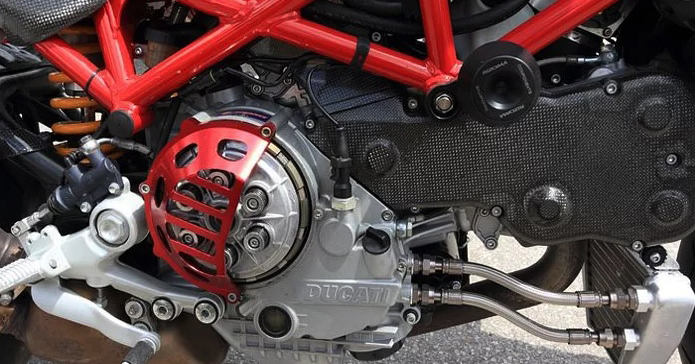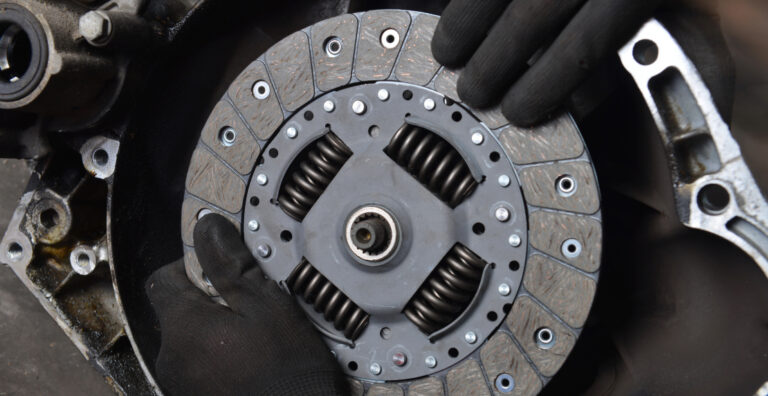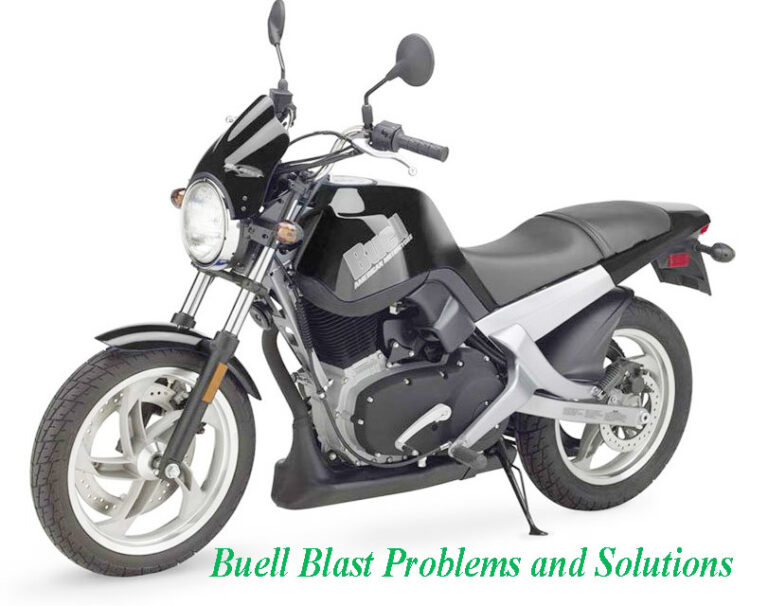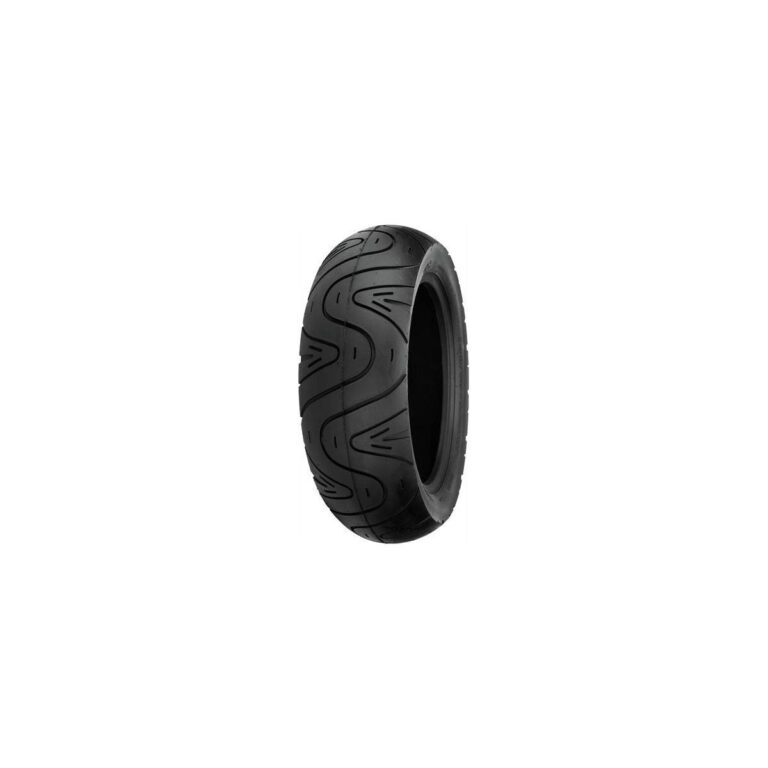Clutch Slipping Motorcycle Symptoms
The clutch slipping motorcycle symptom is when the engine revs but the bike does not move. This can happen when the clutch is worn out or if the cable is not adjusted properly.
If your motorcycle’s clutch is slipping, you’ll likely notice some tell-tale signs while riding. The most common symptom is a loss of power while accelerating. You may also notice that it’s difficult to get the bike moving from a stop, or that the engine revs but the bike doesn’t move as quickly as it should.
Other symptoms can include a burning smell or smoke coming from the clutch area, or abnormal noise when shifting gears. If you notice any of these issues, it’s important to have your motorcycle serviced as soon as possible to avoid further damage. In most cases, clutch slipping is caused by wear and tear on the friction materials in the clutch system.
Over time, these materials can break down and no longer provide enough grip to effectively transfer power from the engine to the wheels. In some cases, however, other factors can contribute to clutch slipping – such as using the wrong type of oil in your transmission. If you suspect that your motorcycle’s clutch is starting to slip, be sure to have it checked out by a qualified technician as soon as possible.
In many cases, simple repairs or adjustments can resolve the issue and get you back on the road without issue.
How Do You Know If Your Motorcycle Clutch is Slipping?
If your motorcycle clutch is slipping, you’ll likely notice a decrease in power when accelerating. The engine will rev up but the bike won’t gain speed as quickly as it should. You might also notice that it’s difficult to get the bike into a higher gear.
If you suspect your clutch is slipping, have a mechanic take a look at it as soon as possible. Continuing to ride with a slipping clutch can cause damage to the engine and transmission.
What Happens When Motorcycle Clutch Slips?
When a motorcycle clutch slips, it means that the clutch is not engaging properly. This can cause the engine to rev up without the bike moving, or the bike may move erratically. If your clutch starts slipping, it’s important to take action immediately.
Otherwise, you could damage your engine or transmission. Here’s what you need to know about motorcycle clutch slipping and how to fix it. The first thing you should do if your clutch starts slipping is to check the fluid level in the reservoir.
If it’s low, add more until it reaches the proper level. Next, check for any leaks in the system. If you find any, repair them before proceeding.
Once you’ve ruled out those two issues, it’s time to take a closer look at the components of your clutch system. The most likely culprit of a slipping clutch is worn-out friction material on the pressure plate or discs. When this happens, there’s not enough grip between these parts to transfer power from the engine to the wheels effectively.
You’ll need to replace these parts with new ones if they’re severely worn out. However, if they’re only slightly damaged, you may be able to get away with resurfacing them instead. Another possibility is that something is wrong with your cable adjuster or release arm assembly.
These parts are responsible for making sure that there’s tension on the cable so that it can engage properly when you pull on the lever. If they’re damaged or defective, they won’t be able to do their job correctly and your clutch will slip as a result.
What are the 5 Symptoms of a Bad Clutch?
When it comes to car trouble, a bad clutch is one of the worst things that can happen. Not only is it expensive to fix, but it can also be very dangerous. Here are five symptoms of a bad clutch:
- The car shakes or vibrates when you try to engage the clutch. This is usually a sign that the clutch plate is worn out and needs to be replaced.
- You hear a grinding noise when you press the pedal. This means that the pressure plate is not engaging properly and needs to be adjusted or replaced.
- The pedal feels “soft” or spongy when you press it down. This could be a sign of a leak in the hydraulic system that operates the clutch.
- The car slips out of gear while driving, or refuses to go into gear at all. This indicates that the clutch is not disengaging properly and needs to be fixed ASAP.
- The engine revs but the car don’t move when you put it into gear.
What does a Slipping Clutch Feel Like?
When a clutch begins to slip, it will feel like the engine is revving but the car isn’t moving. This can happen when the clutch plate becomes worn and no longer grips the flywheel as tightly. The engine will continue to run but the wheels won’t turn, making it difficult to drive.
Slipping can also occur if there is a problem with the hydraulic system that actuates the clutch. If fluid leaks from this system, it will reduce the pressure that’s needed to engage the clutch and cause slipping.

Motorcycle Clutch Slipping Under Hard Acceleration
If you’re a motorcycle rider, you know the feeling of an engine revving without any accompanying forward motion. It’s called clutch slipping, and it’s one of the most frustrating things that can happen while riding. Clutch slipping usually occurs when the rider is trying to accelerate too hard, causing the clutch to slip and not engage fully.
This can be a real problem if it happens while trying to overtake another vehicle or merge onto a highway. So what causes clutch slipping? There are several factors that can contribute, but the most common is simply wear and tear on the clutch components.
Over time, the friction materials in the clutch begin to break down and lose their ability to grip properly. This can be compounded by improper adjustment of the clutch cable or hydraulic system. Another common cause is using lower-quality fluids in the hydraulic system; these fluids don’t lubricate as well and can cause premature wear.
Whatever the cause, once your motorcycle’s clutch starts slipping it needs to be addressed quickly before it leads to more serious problems. The first step is to have your bike towed or ridden to a qualified mechanic who can diagnose the issue and make any necessary repairs or adjustments. In some cases, you may need to replace your entire clutch assembly.
But with proper care and maintenance, you can avoid this costly repair and keep your motorcycle running smoothly for years to come.
When to Change Clutch Cable Motorcycle
If you’re a motorcycle rider, then you know that one of the most important parts of your bike is the clutch. The clutch is what allows you to change gears and control the speed of your bike. Without it, you wouldn’t be able to ride.
So, when should you change your clutch cable? First, let’s talk about how often you should inspect it. You should check your clutch cable at least once a month to make sure there are no fraying or kinks.
If you notice any damage, then it’s time to replace the cable. Now, as for when to actually replace the cable, that really depends on how often you ride and how hard you ride. If you only ride occasionally and don’t put too much stress on the clutch, then you can probably get away with replacing it every two years or so.
However, if you’re a hardcore rider who is always pushing the limits, then you might need to replace your cable every year or even sooner. No matter how often you ride or how hard you ride, always keep an eye on your clutch cable and replace it whenever necessary. It’s an essential part of your motorcycle and ignoring it could lead to some serious problems down the road.
Symptoms of Bad Motorcycle Transmission
Bad motorcycle transmissions usually exhibit several symptoms that can be recognized with a little bit of knowledge. First, check the transmission fluid level and if it is low, add more of the same type of fluid. If the color of the fluid is dark or burnt-looking, then the transmission most likely needs to be rebuilt or replaced.
Second, while riding, notice if the engine RPMs increase without an accompanying increase in speed. This is called “slipping” and indicates worn clutch plates or gears. Third, listen for any strange noises coming from the transmission area such as grinding, whining, or humming sounds which could indicate failing bearings.
Finally, if shifting gears becomes difficult or sloppy feeling then there may be an issue with linkage adjustment or worn parts inside the transmission itself. Any combination of these symptoms warrants a visit to a qualified motorcycle mechanic for diagnosis and repair before further damage occurs.
Conclusion
If you’re a motorcycle rider, you know that the clutch is an important part of your bike. The clutch allows you to change gears and control your speed. If your clutch is slipping, it can be a major problem.
Here are some signs that your clutch may be slipping:
Your engine revs but your bike doesn’t move. This is the most obvious sign that something is wrong with your clutch. If you give the throttle a twist and your engine revs but the bike doesn’t move, then your clutch is probably slipping.
You can’t seem to get into higher gears: Another symptom of a slipping clutch is that you can’t seem to get into higher gears. This happens because the clutch can’t hold onto the gear when you try to shift up.
Your bike feels like it’s going to stall: If your motorcycle feels like it’s going to stall every time you come to a stop, this could be another symptom of a slipping clutch. When the clutch slips, it doesn’t engage properly and this can cause the engine to stall out.
There’s a burning smell: If you notice a burning smell coming from your bike, it could be due to the friction caused by a slipping clutch.



